Today, most of the people associate Népsziget, belonging to the 6th and 13th district, with a section of the Danube bank full of ruined buildings. Unfortunately, this image is not completely far from reality, but if we take a closer look at the area, we can also discover parts of surprising purity. But first, let’s review the history of the island!
For centuries it has been given different names. The fact that the Danube used to have many islands near Budapest, especially in today's North-Pest section, complicates the matter. Today's Népsziget also had the names Saban Island, Pest Island, Újpest Island, Csigás (Snail) Island, Szúnyog (Mosquito) Island in chronological order. Almost two hundred years ago, however, in the river industrial shipbuilding fever, it was connected to the mainland at its northern end to make the port safer for shipyards, so it is now only a peninsula. It later became known as Népsziget, when it was actually already a peninsula.
It is also interesting that next to it, to the north-west, lies the Palotai Island. Before Greater Budapest, today's Népsziget belonged to Budapest, but Palotai Island belonged to Újpest. The Újpest railway bridge, which bisected Népsziget, had been standing for a long time at that time, and the railway was the administrative border, except here on the island.
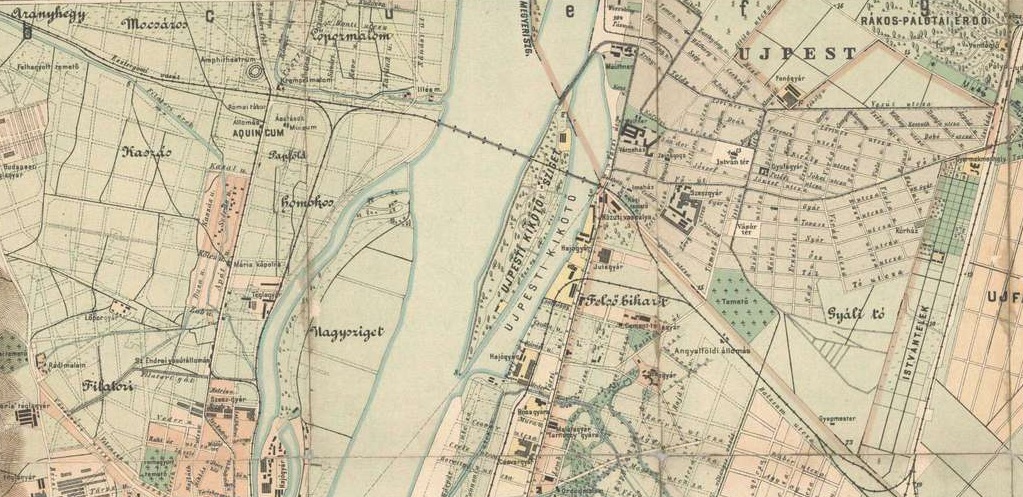 The administrative relations of a hundred years ago, in the middle the present-day Népsziget, then called Újpest port island (Source: Map of the capital of Budapest and its surroundings, 1903)
The administrative relations of a hundred years ago, in the middle the present-day Népsziget, then called Újpest port island (Source: Map of the capital of Budapest and its surroundings, 1903)
When Greater Budapest was established, in 1950, the railway was the border line between the two districts (Angyalföld and Újpest), although the entire Népsziget supposed to be “subjected” to the 13th district. The almost achieved world fame is also an interesting story. Hungary recently wanted to host the Olympics, not for the first time. Instead of Athens, Budapest was already considered a popping-up venue for the first Olympics due to the deplorable Greek financial situation around the turn of the previous century.
Later, it was a finished fact that the 1920 Olympics would be hosted by Budapest. Of course, World War II swept away the plans. Ironically, in the end the losing powers could not even take part in the Antwerp Olympics… One of the big shots of the Horthy era in the early 1920s would have been to revive the Olympic hopes, but due to severe economic and financial difficulties, the topic was soon off the agenda - in any case, the plans were prepared. Several well-known athletes at the time dreamed of building the Olympic venues on Népsziget. Water sports would undoubtedly have found favourable conditions here, but if our capital ever hosts an Olympics, Csepel Island will start from a much more advantageous position due to better infrastructural conditions.
Well, let's get back to the present! As mentioned, the territory of Népsziget is divided between two districts. It can be approached from both districts, as a pedestrian bridge was built in the southern part of the peninsula, above the entrance to the bay, in the seventies. So it is clear why it can be reached on foot in just a few minutes on foot from the Gyöngyösi Road metro station. It is also easily accessible for those coming from Óbuda with the help of the railway bridge, and last but not least with the buses running from Újpest on Váci Road on the connecting neck of land. BKK cruises, when they travel, also stop at the entrance to the bay.
We start our journey from Palotai Island. The nature of Palotai Island is also worth mentioning, because today this area is perhaps the most beautiful and most preserved floodplain area of Budapest. Palotai Island started from Rév Street in Újpest, today it i more of a small part of town, there is no substantial watercourse on it, but at its southern end the Danube bay shows the border of the two former islands well.
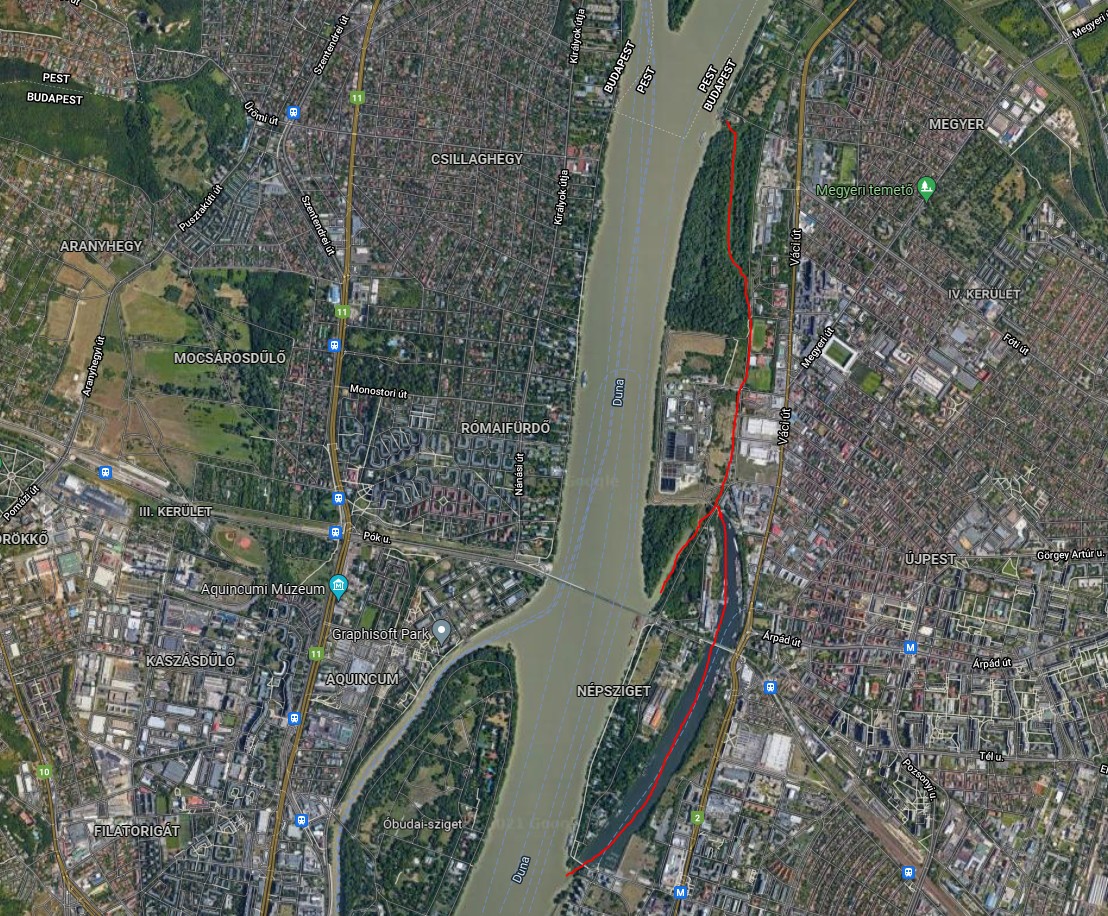
Delimitation of Palotai Island and Népsziget in today's conditions (Source: Google Maps)
Palotai Island is also worth visiting, as the sandy-gravel floodplain soil provides a very pleasant view. And in the sunny autumn weather, we don’t have to worry about biting mosquitoes and other insects anymore, so it can be the perfect time for a pleasant walk. The bay between Népsziget and Palotai Island provides a perfect place for swimming, fishing and smaller community programs.
.jpg)
Old trees in the floodplain forest (Photo: Dávid Palotás / pestbuda.hu)
There are several campfire sites, although their legality is in question, in any case, Népsziget is not a nature reserve today, unlike Palotai Island.
.jpg) There are several campfire sites, although their legality is in question, in any case, Népsziget is not a nature reserve today, unlike Palotai Island.
There are several campfire sites, although their legality is in question, in any case, Népsziget is not a nature reserve today, unlike Palotai Island.
If we now head south on Népsziget, the tip of the peninsula, we can see that there is a dog school, a goat farm, a riding school, a youth camp and, of course, the buildings of the former shipyard and other industrial facilities, most of which are out of order. Moreover, the hull of the Hableány [Mermaid], pulled out after the great shipwreck of 2019, awaits its brighter future here.
Of course, this doesn’t detract from the enjoyment value of the coastal promenades, but it’s good to know that only a barely 50 feet wide strip is what can be said to be relatively untouched today. Trains rumbling on the railway bridge can also be tolerated, but since the handover of the new bridge and the launch of the new train services, train traffic has been noticeably denser.
.jpg) View from the pillar of the railway bridge (Photo: Dávid Palotás / pestbuda.hu)
View from the pillar of the railway bridge (Photo: Dávid Palotás / pestbuda.hu)
Recently, there have also been more and more catering establishments, which shows that the area is starting to urbanize. Urbanization is not yet predominant, in contrast to the Római-part, for example, but it is also due to a lack of infrastructure. In any case, at the southern end of the peninsula, the brand new Marina Coast district was recently handed over. Since then, there have been noticeably more dog walkers and runners, but their number is not disturbing.
South of the railway bridge, the shore is already built, but that only means it is paved. The panorama is wonderful on the Buda side. The ranges of Pilis and Buda Hills, as well as the shores of Óbuda Island are also clearly visible. On the stairs of the many abandoned boat pull-outs, students study, seniors read, but the same is true of abandoned piers.
.jpg) Students often sit on the piers to study and read (Photo: Dávid Palotás / pestbuda.hu)
Students often sit on the piers to study and read (Photo: Dávid Palotás / pestbuda.hu)
The coastal promenade is covered with a plethora of oil-leaved poplar trees that shade the sun in summer, otherwise part of the view, but it also provides the perfect retreat experience for people sitting directly on the shore.
.jpg) The coastal promenade is especially spectacular in autumn (Photo: Dávid Palotás / pestbuda.hu)
The coastal promenade is especially spectacular in autumn (Photo: Dávid Palotás / pestbuda.hu)
The coastline of the peninsula on the Danube shoreline is one and a half to two kilometers long, and that of the entire peninsula is three kilometers. If you visit Népsziget, be prepared that the walk will be at least five kilometres long, but if you really want to walk along the floodplains of Palotai Island, expect a six- to seven-kilometer walk.
.jpg) The depleted part of the Danube branch separating the two former islands (Photo: Dávid Palotás / pestbuda.hu)
The depleted part of the Danube branch separating the two former islands (Photo: Dávid Palotás / pestbuda.hu)
In return, we really get the experience of walking in a large park in the middle of a city. Maybe this is also the function of today’s Népsziget. On the other hand, we should not delay, because we are reading and hearing from more and more sources that they want to build residential and entertainment buildings on the peninsula. As it is not a nature reserve, it is one degree easier to do so.
.jpg) View of the bay from the pedestrian bridge (Photo: Dávid Palotás / pestbuda.hu)
View of the bay from the pedestrian bridge (Photo: Dávid Palotás / pestbuda.hu)
Unfortunately, it would not surprise anyone, as it is located in a frequented place, its accessibility is also exceptionally good. As long as you can walk here with impunity, it is worth taking advantage of, because the romantic waterfront experience will be given to the hiker here and will not even stumble in the trash - thanks to the sacrificial work of various associations and the FKF.
Cover photo: Népsziget nowadays (Photo: Dávid Palotás / pestbuda.hu)

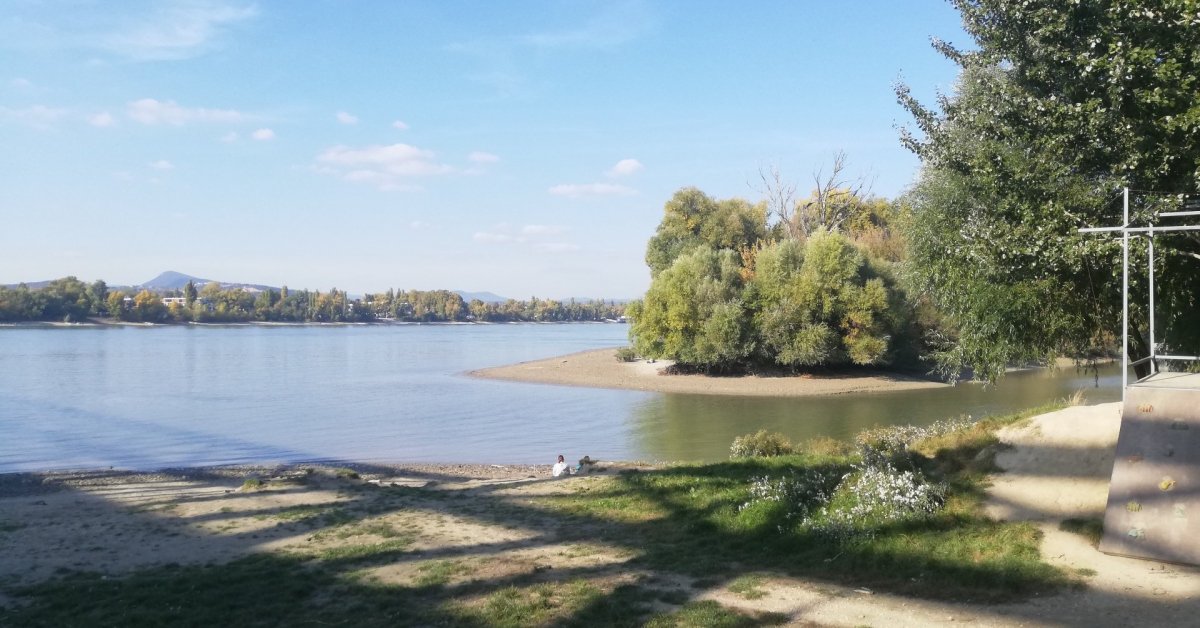
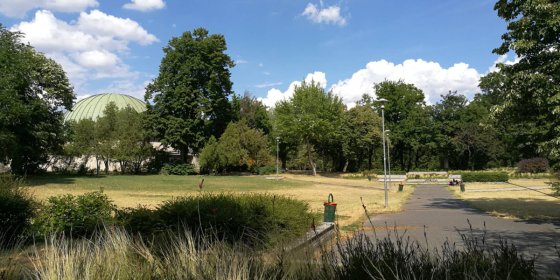
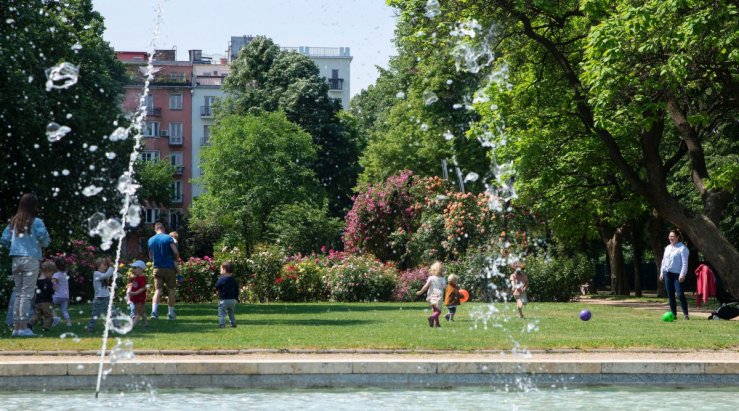
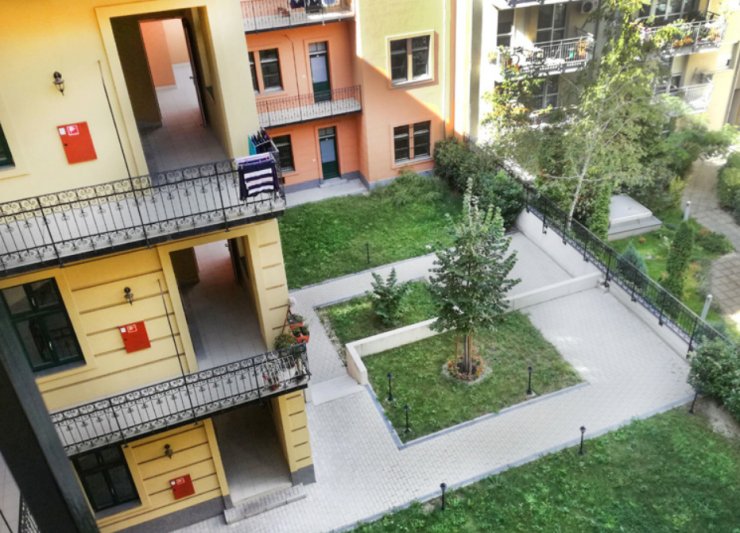

































Hozzászólások
Log in or register to comment!
Login Registration